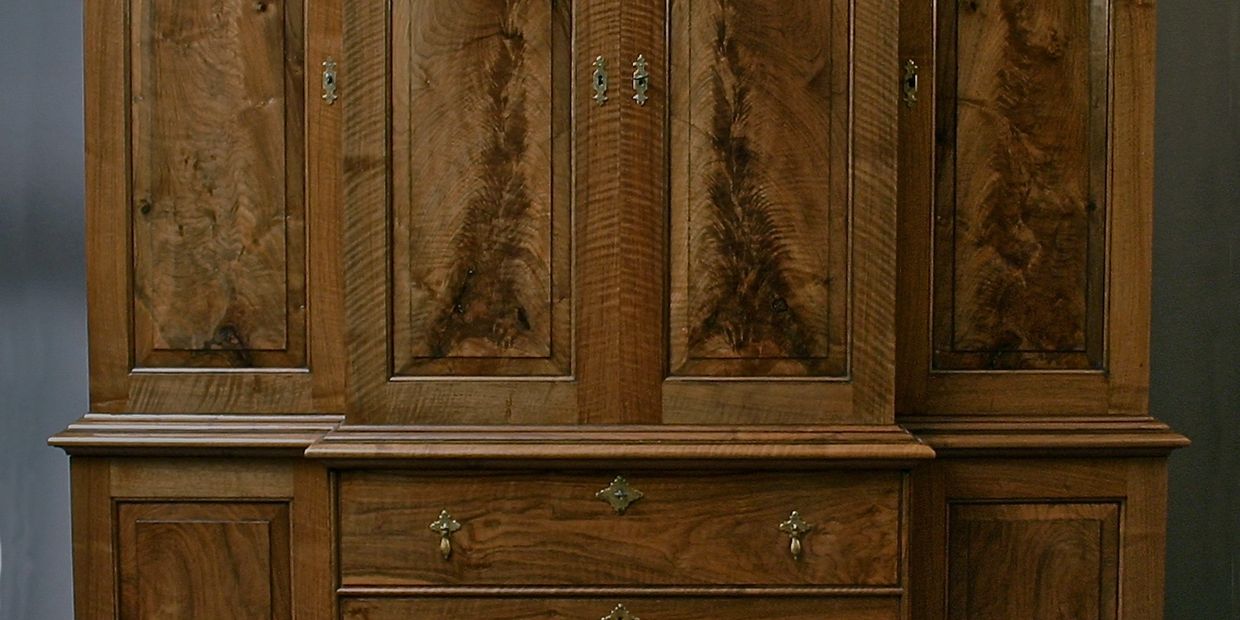
William and Mary Wardrobe
In the fall of 2008 I was commissioned to make a wardrobe for a dressing room. The following photographs show the techniques employed to make a wardrobe in the William and Mary style. This is a style that dates in America from 1690 - 1720, a style that continues past the reign of William III of Great Britain. On English furniture the style is marked by the use of cross-grain veneers and inlay. It is a robust style with large moldings and turned feet. Walnut was the predominant wood used to make furniture of this period in both England and America. In America, however, the abundance of large walnut trees as well as most other species allowed cabinetmakers to use solid lumber rather than veneer. Secondary woods were used in greater thicknesses than in their European counterparts.
This wardrobe is made from Pennsylvania black walnut. Paul Kise of Good Hope Hardwoods told me that the trunk was over four feet in diameter and that before it had been cut, it produced few walnuts but those it did produce were the size of apples. The two flitches were from two main branches from this trunk and were over 22 inches in diameter. All the boards exhibited some curl and the center boards had nice crotch figure. These were to be the door panels.
The case is composed of seven elements: the base which is comprised of a molding platform supported by eight feet; the bottom case which houses the three center drawers and two small side cabinets; the waist mold which is a series of stacked moldings on a frame; three top cabinets which are tied together by the waist mold and; the cornice, again a series of stacked moldings. Most all moldings are made using hand planes.
The Wood






Process









